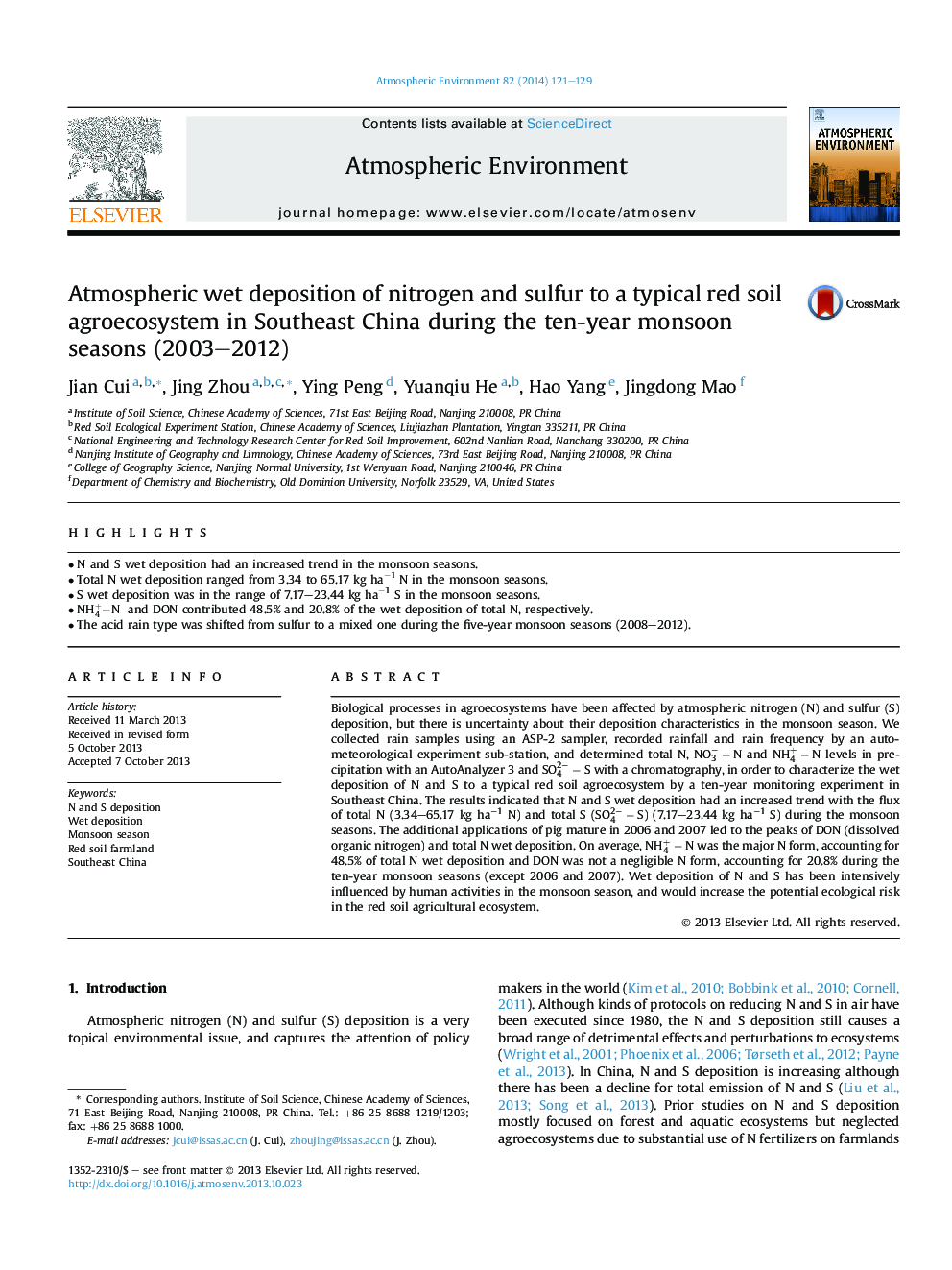| Article ID | Journal | Published Year | Pages | File Type |
|---|---|---|---|---|
| 6340036 | Atmospheric Environment | 2014 | 9 Pages |
Abstract
Biological processes in agroecosystems have been affected by atmospheric nitrogen (N) and sulfur (S) deposition, but there is uncertainty about their deposition characteristics in the monsoon season. We collected rain samples using an ASP-2 sampler, recorded rainfall and rain frequency by an auto-meteorological experiment sub-station, and determined total N, NO3â-N and NH4+-N levels in precipitation with an AutoAnalyzer 3 and SO42â-S with a chromatography, in order to characterize the wet deposition of N and S to a typical red soil agroecosystem by a ten-year monitoring experiment in Southeast China. The results indicated that N and S wet deposition had an increased trend with the flux of total N (3.34-65.17 kg haâ1 N) and total S (SO42â-S) (7.17-23.44 kg haâ1 S) during the monsoon seasons. The additional applications of pig mature in 2006 and 2007 led to the peaks of DON (dissolved organic nitrogen) and total N wet deposition. On average, NH4+-N was the major N form, accounting for 48.5% of total N wet deposition and DON was not a negligible N form, accounting for 20.8% during the ten-year monsoon seasons (except 2006 and 2007). Wet deposition of N and S has been intensively influenced by human activities in the monsoon season, and would increase the potential ecological risk in the red soil agricultural ecosystem.
Related Topics
Physical Sciences and Engineering
Earth and Planetary Sciences
Atmospheric Science
Authors
Jian Cui, Jing Zhou, Ying Peng, Yuanqiu He, Hao Yang, Jingdong Mao,
